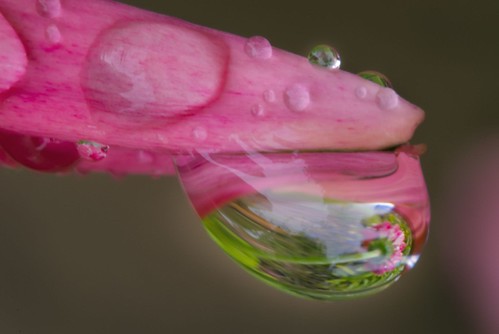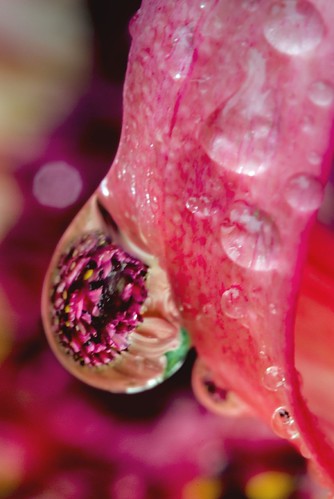I spent most of the morning recently photographing water drops on a single pink Gerbera daisy in my garden. This was engrossing, fun, and satisfied. As I worked, I realized the task required a great deal of patience. But not much fortitude: my garden was my model, I did not have to shlepp my equipment very far, and I literally had the comforts of home. I also thought about the paradox of macro photography. The heart of the matter in these water drop photos is shown within the world of the reflections. To successfully capture the reflected world I distanced myself with a complicated apparatus including a telephoto macro lens.
View this image larger. Read the back story featuring this image.
While it is possible to create wide-angle macros, my normal process is to use equipment that disturbs my models (for example, a water drop on a Gerbera) as little as possible.
View this image larger.
Forget about auto-focusing. There’s no way this technology works for the macro, and it is annoying to hear your poor lens chug back and forth, searching, always searching, for the point of focus that is never to be found.
It’s never easy to successfully find the best point of focus on a very small and constantly moving subject like a water drop. I find it works to concentrate on an idealized water within the water drop, and to focus to bring out the water drop essence that I’d like, paying only partial attention to the water drop that seemingly is (as seen in the camera viewfinder). This is a sideways, allusive focusing technique. It helps me capture the heart of the matter.


Pingback: Photoblog 2.0: » Photoblog 2.0 Archive: » Red Gerbera Daisy
Pingback: Mandala – Harold Davis